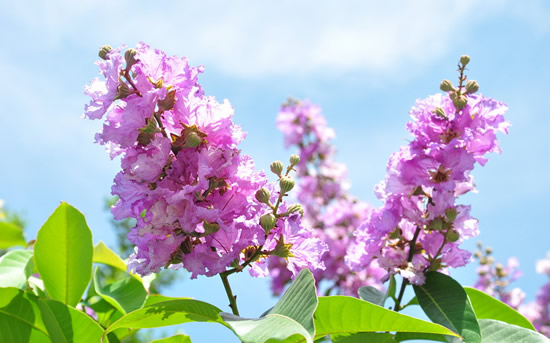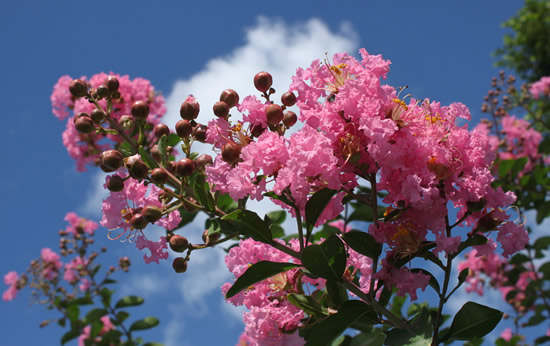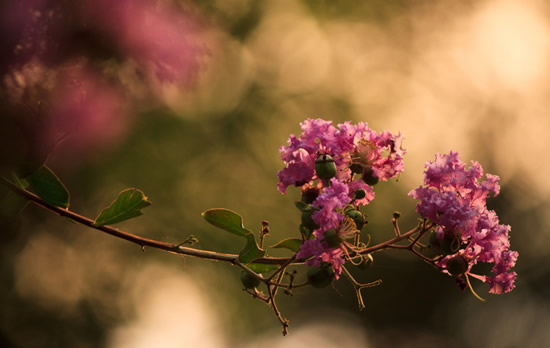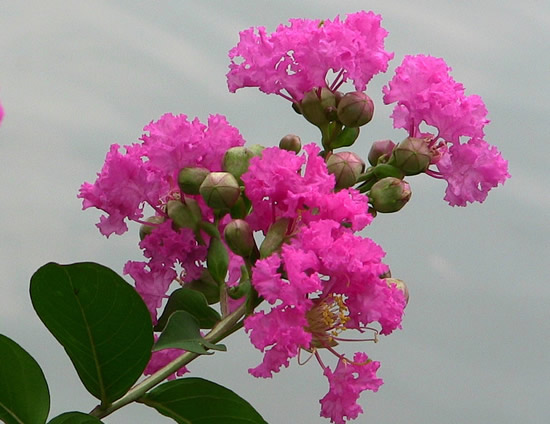How to raise crape myrtle flower matters needing attention in culturing crape myrtle
Crape myrtle famous hundred-day red is a very good decorative flower species, and want to breed it well in advance to understand some crape myrtle breeding methods and matters needing attention is very comparative. The next content is to talk to you about how to raise crape myrtle.
Culture methods and matters needing attention of crape myrtle
1. The culture method of crape myrtle: crape myrtle is a positive tree species. When planting, we should choose a sunny environment, the soil should be moist and fertile, and have good drainage at the same time. The transplanting time of crape myrtle is from March to early April, with Ching Ming Festival as the best, followed by autumn. When transplanting, the plant should take the soil, leave the trunk 100 to 120 square meters to cut off the upper part, and wait for the new shoots to grow, leaving 3 or 4 main branches with the most suitable angle to let it blossom.

2. Light watering: crape myrtle is a light-loving plant, so it must be placed in the outdoor sunshine during the growing season. At the same time, crape myrtle requires a lot of water in the growing season, so it needs to keep the soil moist. Keep the basin soil moist in spring and east, and water each in the morning and evening in summer and autumn. In case of high temperature, you can increase the frequency of watering.
3. Regular fertilization: crape myrtle is a fertilizer-loving plant. Lack of fertilizer in potted crape myrtle will lead to weak branches and yellowing color, resulting in weak plant growth, little or no flowering, but excessive fertilization will lead to excessive growth of branches and leaves. More fertilizer can be applied in the vigorous growth season in spring and summer, less fertilizer in autumn, no fertilization in dormancy in winter, and no fertilization in rainy season and hot noon in summer.

At the same time, the principle of frequent application of thin fertilizer should be followed, the combination of nitrogen, phosphorus and potassium fertilizer should be used in early March, phosphorus and potassium fertilizer should be applied once from late May to early June to promote the increase of flower buds, strong branches and promoting flowers should be applied in late July and early September, respectively. Fertilizer for cake fertilizer and so on, so as to make the flowers bloom more brightly.
4. Shaping and pruning: crape myrtle has strong branching power and large growth of new shoots, so it is very resistant to pruning. Crape myrtle flowers should be cut off after flowering, which can prolong the flowering period, and some cross branches, diseased branches and radiation branches should be cut off in time so as not to consume excess nutrients. At the same time, in order to beautify the shape, the plump terminal buds of other branches are generally truncated 1 inch above the top bud, keeping about 5 meters.

5. Change the basin in time: potted crape myrtle needs to change the basin soil every two to three years. 5% loose mountain soil, 3% pastoral soil and 2% fine river sand are mixed into culture soil. when changing the basin, you can use bone powder, bean cake powder and other organic fertilizer as the base fertilizer, mixed on the surface of the soil, so that the fertilizer can not be in direct contact with the root system, so as not to burn the root system and affect the plant growth.

After talking about the breeding methods of crape myrtle, let's talk about the methods of pest control of crape myrtle.
The common diseases and insect pests of crape myrtle are shell insects, aphids, powder aphids and coal fouling disease. Crape myrtle is vulnerable to shell insects under the condition of insufficient light and poor ventilation, which can also cause coal fouling disease, withering and yellowing leaves and early defoliation. Scale insects can be sprayed with 1000 times of dimethoate EC, or poisoned with 3% Fangludan granular soil. In the plum rain, aphids and powder aphids are often harmed, causing the leaves to turn yellow or stained with oily dirt on the leaves, and then the leaves are removed, affecting inflorescence formation, which can be sprayed with 1500 times diluted with dimethoate, or killed with dichlorvos emulsion 1000-1200 times. Once crape myrtle is infected with coal fouling disease, it can be prevented and treated with stone-sulfur mixture.
Related
- Wuhan Hospital Iron Tree Blooming Result Was Instantly Frightened by the Gardener Master
- Which variety of camellia is the most fragrant and best? Which one do you like best?
- What is the small blue coat, the breeding methods and matters needing attention of the succulent plant
- Dormancy time and maintenance management of succulent plants during dormancy
- Minas succulent how to raise, Minas succulent plant pictures
- What are the varieties of winter succulent plants
- How to raise succulent plants in twelve rolls? let's take a look at some experience of breeding twelve rolls.
- Attention should be paid to water control for succulent plants during dormant period (winter and summer)
- Watering experience of twelve rolls of succulent plants
- Techniques for fertilizing succulent plants. An article will let you know how to fertilize succulent plants.



